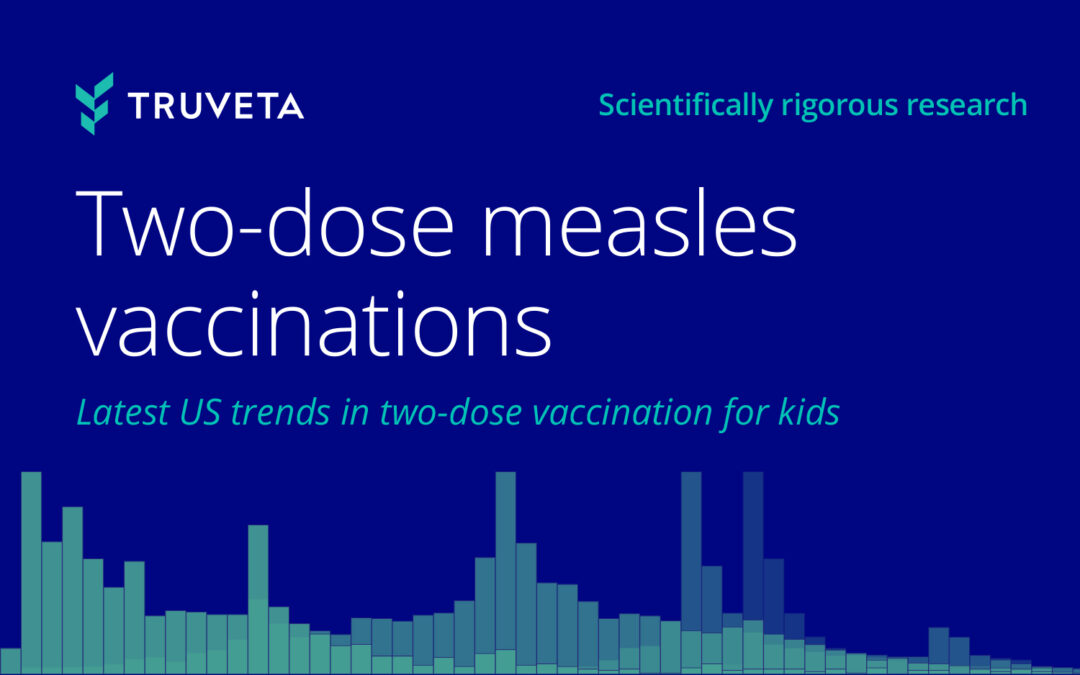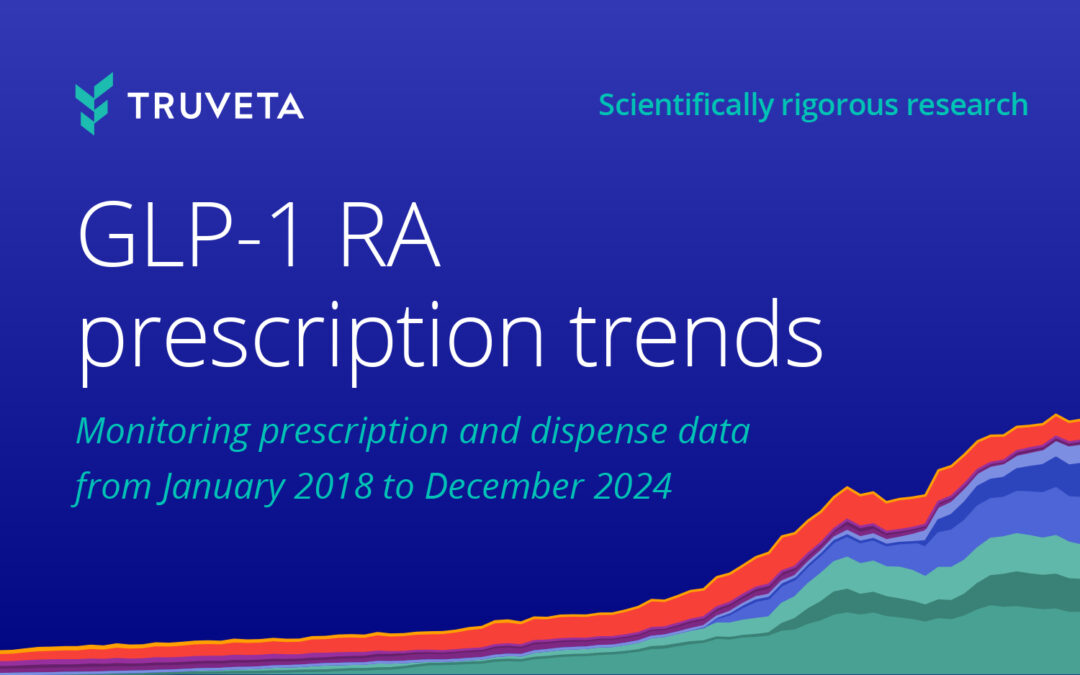- The overall rate of respiratory virus-associated hospitalizations decreased in February, although influenza continues to be the leading cause of respiratory virus-associated hospitalizations (3.5% of all hospitalizations).
- Among children aged 0–4 years, hospitalizations associated with respiratory viruses remained stable at 4.9% month over month. However, RSV-related hospitalizations have increased in this age group (+29.3%).
- Among adults aged 65 and older, hospitalizations related to respiratory viruses declined (-37.4%) through the end of February.
- For all populations, respiratory virus-related hospitalizations make up 6.0% of all hospitalizations.
Respiratory viruses, including COVID-19, influenza, and respiratory syncytial virus (RSV), continue to contribute to hospitalizations across the United States. Vulnerable populations, such as infants, children, and older adults, are particularly at risk of severe outcomes. Few sources regularly monitor hospitalizations associated with respiratory viruses. Truveta Research has created a respiratory virus monitoring report to supplement the surveillance data provided by the CDC by describing weekly trends in the rate of hospitalizations overall and for each of the six most common respiratory viruses: COVID-19, influenza, human metapneumovirus (HMPV), parainfluenza virus, RSV, and rhinovirus. This information can inform decisions about public health, clinical care, and public policy.
Because Truveta Data provides the most complete, timely, and clean de-identified EHR data from 120 million patients, including clinical notes and images, linked with closed claims for 200 million patients across the US, we can show the latest trends in these respiratory virus-associated hospitalizations, including valuable insight into two at-risk populations: infants and children (age 0-4 years old) and older adults (age 65 and over).
This blog provides a snapshot of the key findings with data through March 2, 2025 in the report specific to the overall population across all respiratory viruses, as well as for two high-risk populations: infants and children (age 0-4 years old) and older adults (age 65 and older). For the full analysis – inclusive of demographics, comorbidities, and overall trends in virus-associated hospitalizations across all age groups for each virus – see the complete monitoring report with data through the beginning of March 2025 on MedRxiv.
Key findings: Trends in respiratory virus-associated hospitalizations
Using a subset of Truveta Data, we identified 723,293 hospitalizations of 665,139 unique patients who tested positive for a respiratory virus between October 1, 2020 and March 2, 2025.
Overall hospitalization rates declining
The overall rate of respiratory virus-associated hospitalizations decreased in February. There was a 38% decrease in the rate of hospitalizations from late January to the last week of February, with respiratory virus-associated hospitalizations accounting for 6.0% of all hospitalizations.
Notably, influenza-related hospitalizations continued to be the leading cause of respiratory virus-associated hospitalizations, despite a sharp decline and now are associated with 3.5% of all hospitalizations (down from 6.8% at the end of January).
COVID-, RSV-, and parainfluenza-associated hospitalizations also decreased, while HMPV saw a slight increase.
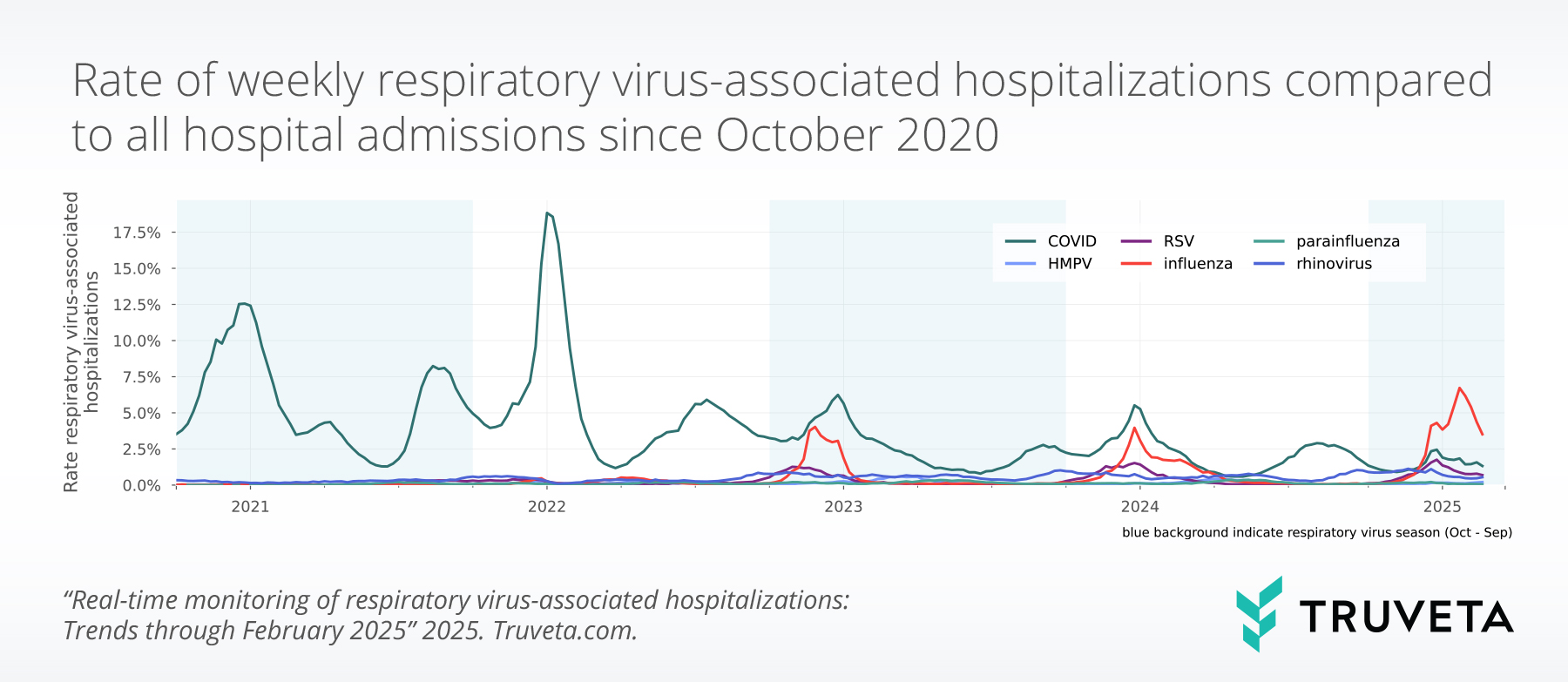
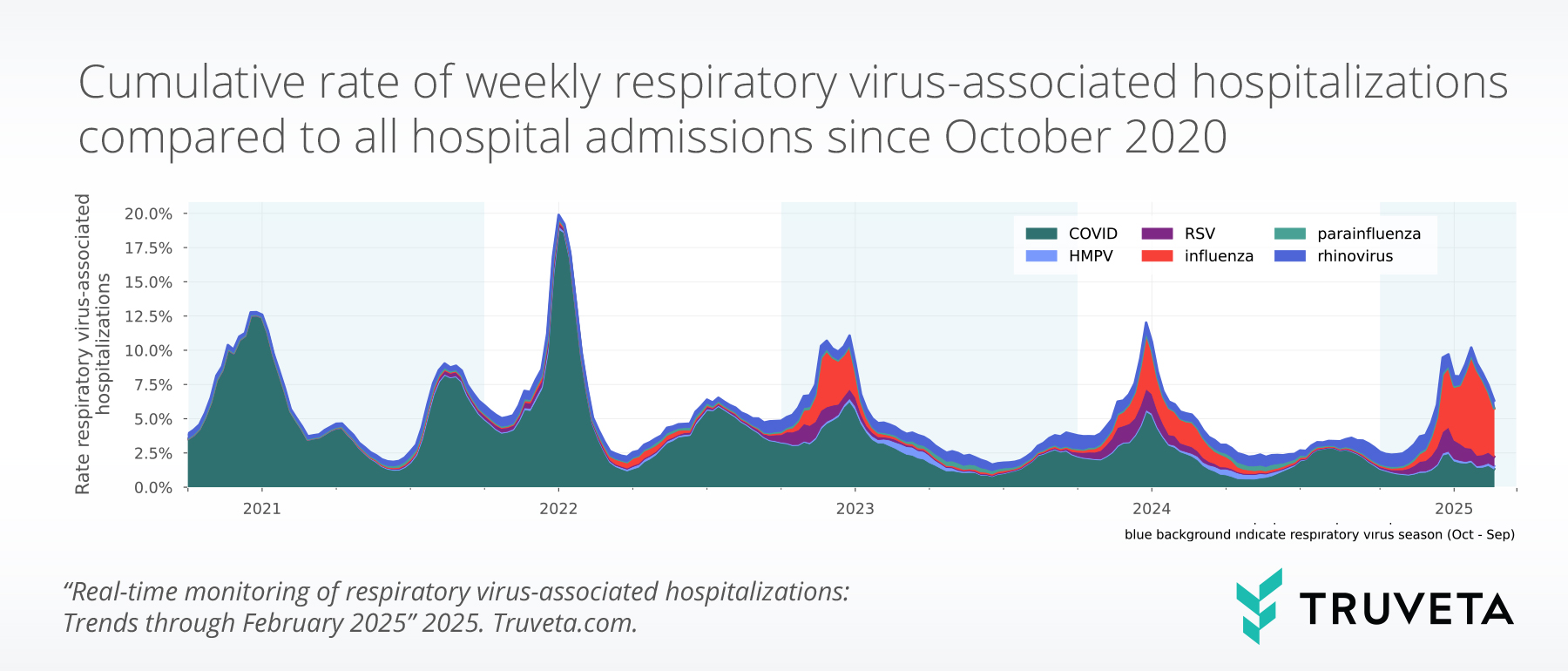

Pediatric respiratory virus-associated hospitalizations stabilize
Among children aged 0–4 years, hospitalizations associated with respiratory viruses remained stable at 4.9% month over month.
RSV-related hospitalizations rose (+29.3%), making up 1.9% of all hospitalizations for kids aged 4 and younger. Influenza-related hospitalizations decreased by 47.2%.
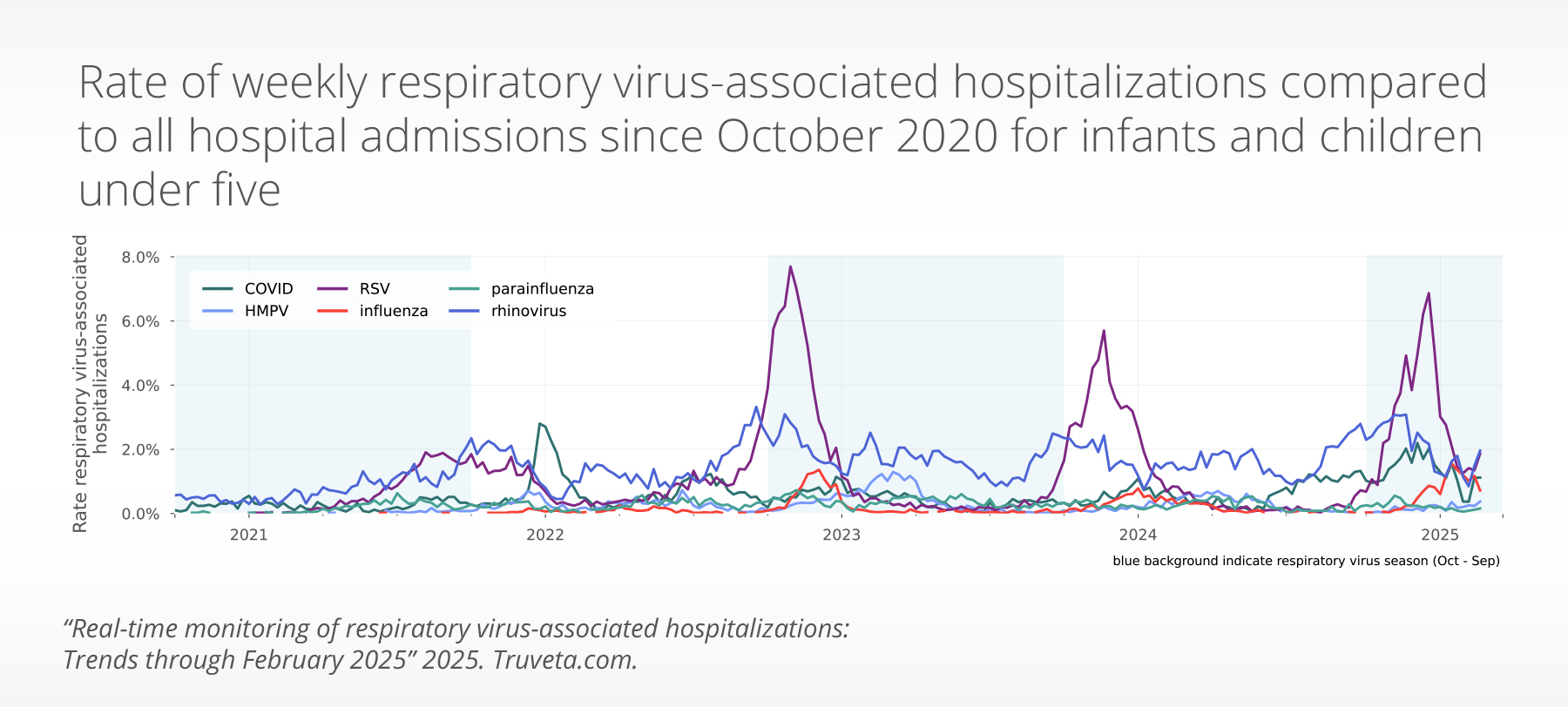
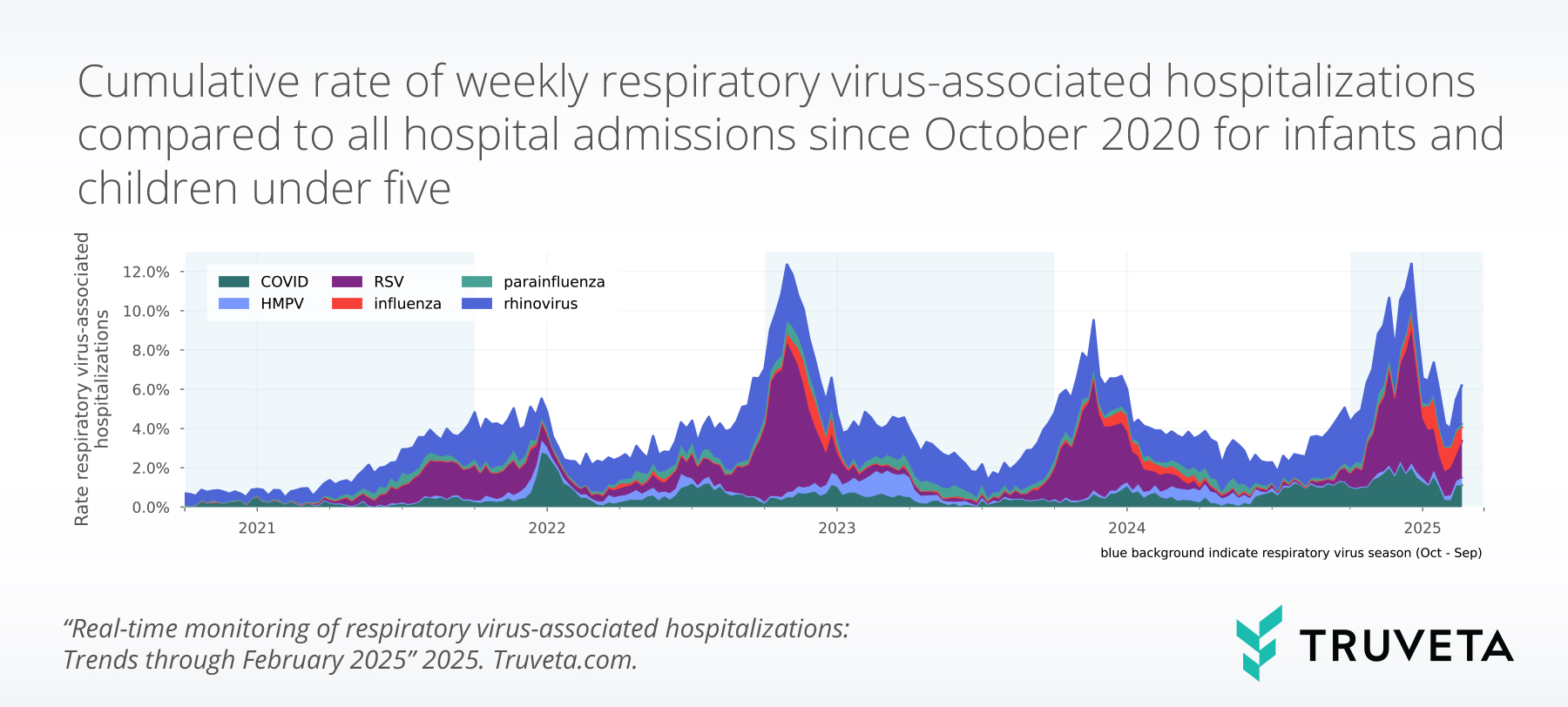

Respiratory virus-related hospitalizations declined in adults over the age of 65
Among adults aged 65 and older, hospitalizations related to respiratory viruses declined (-37.4%) through the end of February. By late February, respiratory virus-related hospitalizations made up 7.5% of all hospitalizations in this age group (down from 11.9% in January).
Influenza-related hospitalizations remained the most common, despite a large decrease (-46.3%) and still account for 4.5% of all hospitalizations in this age group. COVID- and RSV-associated hospitalizations also declined, while HMPV hospitalizations increased slightly.
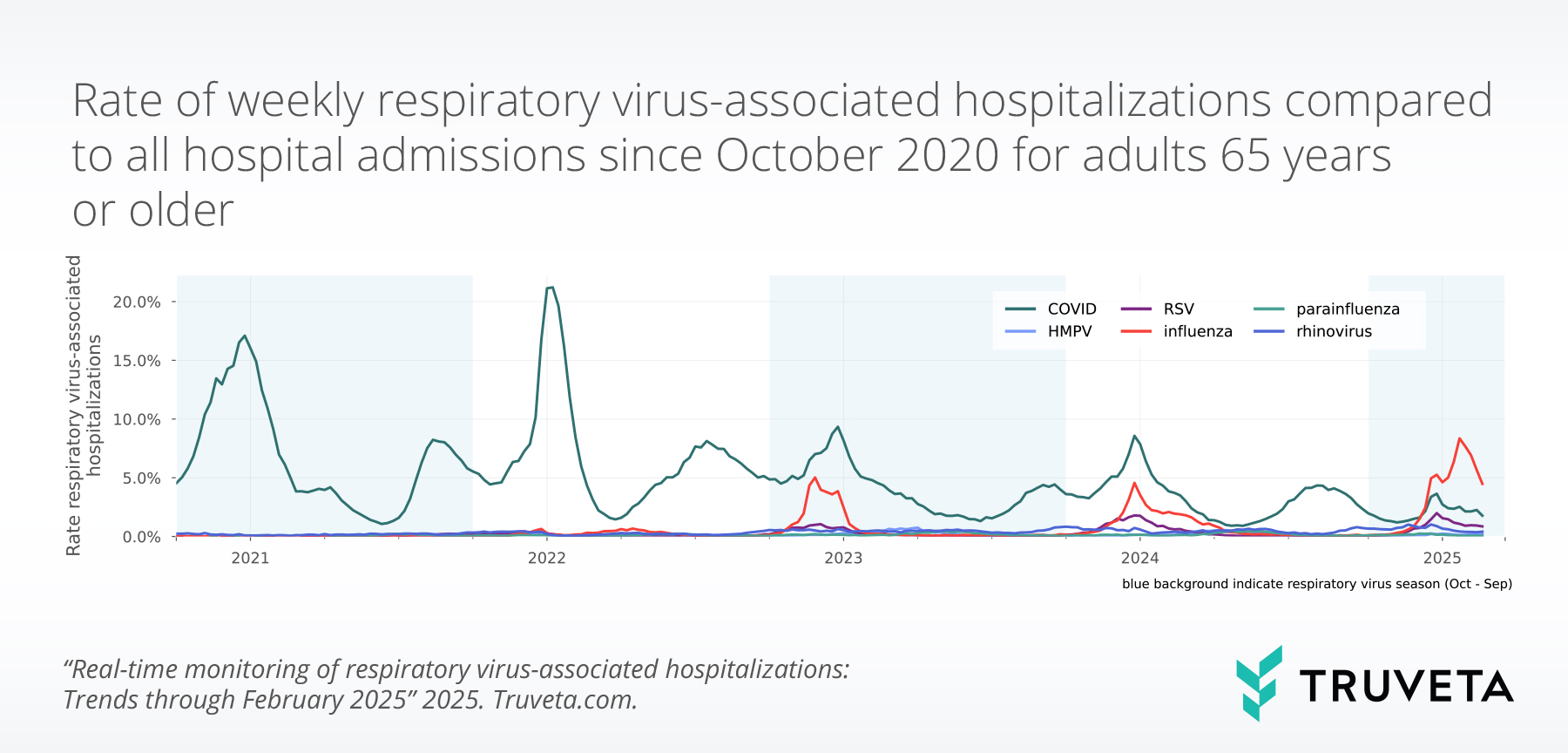
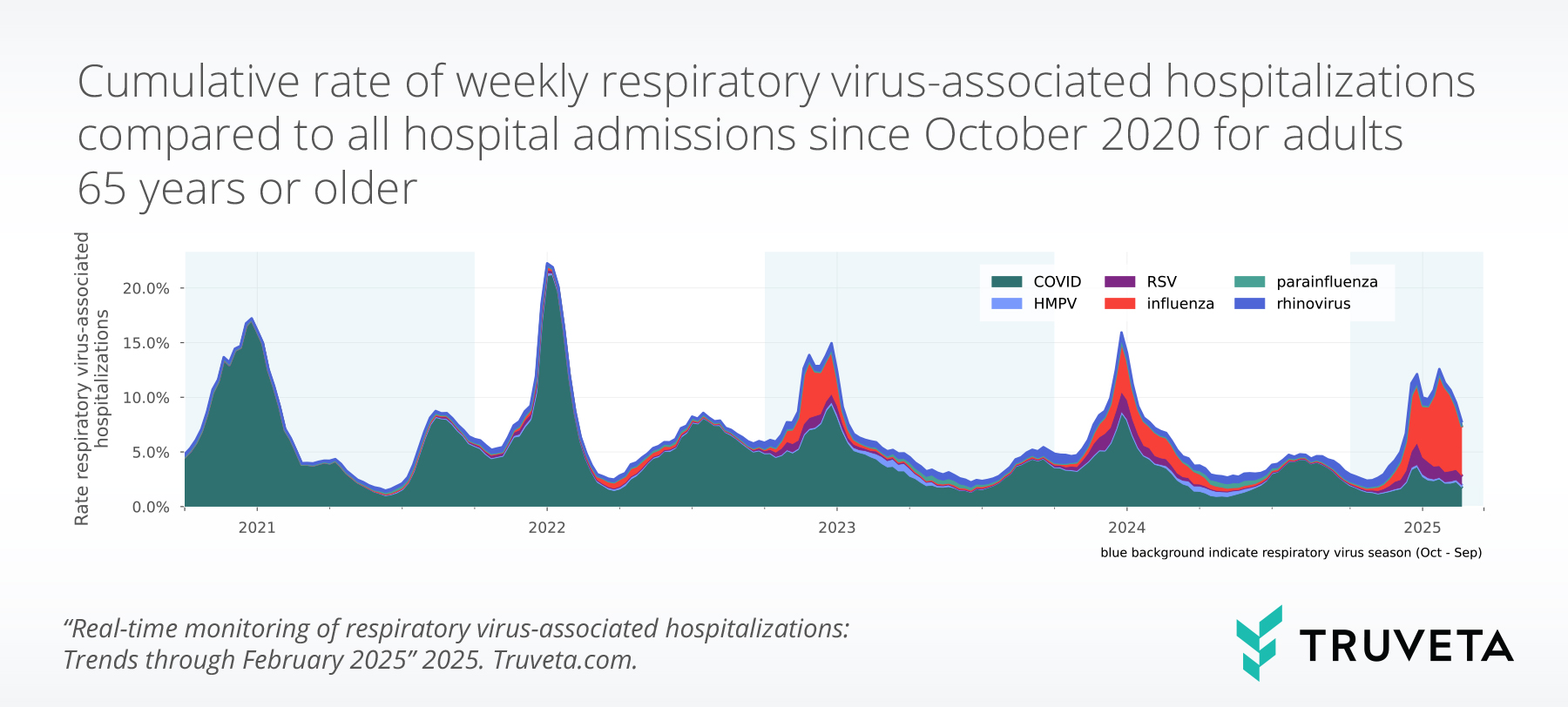

Discussion
It is important for public health experts and clinical providers to understand the trends in these infections to inform decisions about public health, clinical care, and public policy. Connecting population-level trends with granular clinical information available in Truveta Studio can be very useful to understand which populations are most impacted and may require additional support.
We will continue to monitor respiratory virus-associated hospitalization overall and for at-risk populations throughout this 2024-2025 respiratory virus season (October 2024 through September 2025).
View previous monitoring reports
Learn more about how Truveta Data supports timely disease monitoring – contact us for a demo




